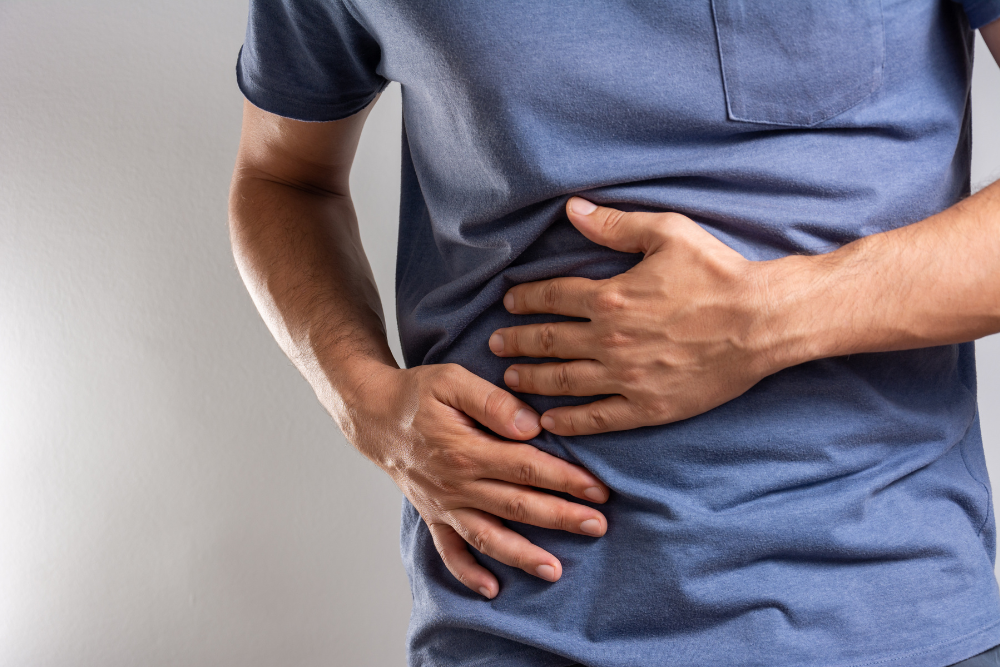If you love coffee but hate what it does to your gut, you’re not alone. Acid reflux after caffeine is one of the most common symptoms we see, but the solution isn’t always quitting your morning cup. Instead, with a few strategic changes, you can keep your routine and support your digestion at the same time. This guide breaks it down into simple, effective steps.

Before we jump into the steps, it’s important to understand what’s really happening in your body and why coffee causes reflux in the first place. While some people can drink multiple cups a day without a single symptom, others experience discomfort after just a few sips.
That’s because no two guts are the same your triggers, digestion speed, and gut sensitivity are unique to you. That’s why a generic fix rarely solves the problem. To get real answers (and real relief), take the Free Claisen Gut Quiz. In just 2 minutes, it helps you uncover your personal reflux patterns and gives you practical next steps that actually make a difference.
Table of contents
What Coffee Does to Your Gut (and Why It Can Cause Reflux)
It’s no secret that coffee powers our mornings but for many people, it also triggers acid reflux soon after. Whether it’s a burning sensation, chest discomfort, or a sour taste, these symptoms are especially common among those with GERD. So what’s actually happening inside your body after that first cup? There are three main ways coffee can contribute to reflux.
1. Coffee Can Relax the LES (Lower Esophageal Sphincter)
The lower esophageal sphincter (LES) is a ring-like muscle that acts as a gate between your stomach and esophagus. Its job is to keep stomach acid where it belongs, in the stomach. Caffeine has been shown to lower LES pressure, making it more likely for acid to leak upward. In other words, when this muscle relaxes, acid reflux becomes much more likely.
A study published in Alimentary Pharmacology & Therapeutics found that “caffeine reduces lower esophageal sphincter pressure in healthy subjects, increasing the likelihood of acid reflux episodes.” (Boekema et al., 1999)

2. Coffee Stimulates Stomach Acid Production
Coffee stimulates the release of gastrin, a hormone produced by the stomach that promotes the secretion of hydrochloric acid (HCl). While this is a normal part of digestion, in sensitive individuals or those with reflux, the increase in acid can heighten the chance of it escaping the stomach.
This stimulation isn’t limited to caffeinated coffee. Compounds such as chlorogenic acids, N-alkanoyl-5-hydroxytryptamides, and catechols (present in both regular and decaffeinated coffee) have been found to activate acid production via endocrine pathways.
Even if the LES remains closed, excessive acid production can still increase gastric pressure and volume, which can overwhelm the LES barrier or cause other digestive symptoms like bloating, nausea, or belching all of which can lead to a reflux.
3. Coffee Is Moderately Acidic
Black coffee has a pH between 4.85 and 5.10 which is about as acidic as a banana or carrot. While much less acidic than your stomach acid (pH 1.5-3.5), it can still irritate sensitive esophageal tissue.
Here's when coffee's acidity becomes a problem:
- Empty stomach consumption -Without food to act as a buffer, coffee's natural acidity and stimulant effect hit your gut lining directly. Increasing acid and ultimately irritating the stomach lining.
- High volume intake - Too much coffee at once raises acid levels and stomach pressure, making reflux more likely.
- Pre-existing inflammation - Already irritated tissue is more sensitive and increases risk of reflux

Coffee's acidity can also slow stomach emptying in some people, keeping acid in contact with your esophagus longer and worsening symptoms.
Step-by-Step Guide: How to Drink Coffee Without Acid Reflux
These strategies work best when implemented together, but don't feel like you need to overhaul everything at once. Start with the changes that feel most manageable and build from there. Think of it as fine-tuning your coffee experience rather than restricting it.
Step 1: Choose the Right Coffee
Not all coffee beans are created equal, and this is where you can make one of the biggest impacts on your reflux symptoms. The type of bean, how it's grown, and how it's processed all influence the final acidity of your cup.
Switch to Low-Acid Coffee Varieties
Your best bets for gentler coffee include:
- Dark roasts (French roast, Italian roast): The extended roasting process actually breaks down many of the chlorogenic acids that contribute to stomach irritation
- Cold brew : This brewing method can reduce acidity by up to 70% compared to traditional hot brewing
- Brazilian beans : These tend to be naturally lower in acid due to their growing conditions and processing methods
- Specialty low-acid brands : Companies like Puroast, Lifeboost, and Java Planet specifically process their beans to minimize acidity

The processing method matters too. Look for coffees that use natural/dry processing or wet-hulled processing (common in Indonesian coffees), as these tend to produce less acidic results than washed processing methods.
Step 2: Choose the Right Brewing Method
Your brewing method can be just as important as your bean choice. Different techniques extract different amounts of acidic compounds, so switching up your approach can significantly reduce reflux symptoms.
Most Effective: Cold Brew Steeping coarse grounds in cold water for 12-18 hours extracts 67% fewer acids than hot brewing methods. This is your best option if you have severe reflux, though it does require planning ahead.
Best for Most People: French Press Use coarse grounds with 195°F water and steep for 4 minutes. This method produces about 40% less acid than standard drip coffee while maintaining rich flavor and requiring no special equipment beyond the press itself.
Good Middle Ground: Pour-Over Using medium-coarse grounds with 190-195°F water and slow, circular pours gives you control over the extraction process while naturally reducing acid content.
The methods to avoid if you're reflux-prone are the high-pressure, high-temperature ones: espresso, Turkish coffee, and moka pot brewing. These extract maximum acids and are most likely to trigger symptoms.
Step 3: Time It Right
This might be the most crucial rule in preventing coffee-induced reflux: never, ever drink coffee on an empty stomach. I can't stress this enough. It's often the difference between comfortable coffee enjoyment and immediate regret.
Never drink coffee on an empty stomach, Food acts as a natural buffer, absorbing excess stomach acid and slowing caffeine absorption so your system isn't hit all at once. The best pre-coffee foods include:
- Oatmeal : High in fiber and naturally alkaline, it's an ideal coffee companion
- Banana : Rich in potassium, which helps neutralize acid
- Greek yogurt : The protein content helps buffer acid while providing sustained energy
- Whole grain toast : Provides steady energy and helps absorb excess acid
Wait 30-60 minutes after eating before having your coffee. This gives your digestive system time to get working and creates that protective food buffer. Keep your coffee consumption to morning hours (ideally before 2 PM) to prevent nighttime reflux, and if you're having multiple cups, space them out by at least 2 hours.
Still experiencing nighttime acid reflux even when you stop coffee by 2 PM? Your reflux might be caused by other factors beyond coffee timing. Take the Claisen quiz to get a personalized understanding of your gut health and discover what's really triggering your acid reflux symptoms so you can finally get the relief you deserve.
Step 4: Add Strategic Coffee Companions
What you add to your coffee can dramatically change how your body responds to it. The right additions don't just improve taste they actively help prevent reflux symptoms.
Milk and Dairy Products
Adding milk or cream to your coffee significantly reduces its acidity while providing calcium that helps neutralize stomach acid. The proteins in dairy act as natural buffers, essentially giving your system extra protection. Your best dairy options include whole milk (highest protein content for maximum buffering), heavy cream (rich and alkalizing), or even a spoonful of Greek yogurt for extra protein.
Plant-Based Alternatives That Help
If you prefer non-dairy options
- Almond milk : Naturally alkaline and gentle on the stomach
- Oat milk : Contains fiber that aids digestion
- Coconut milk : Rich in healthy fats that can help slow acid production

Adding Spices Also Help
Consider incorporating spices that aid digestion, cinnamon for its anti-inflammatory properties, cardamom as a traditional digestive aid, or a pinch of ginger powder to promote gastric motility.
Step 5: Control Portion Size and Frequency
Sometimes the issue isn't what you're drinking, but how much and how fast. Instead of gulping down a large mug, try smaller, more frequent servings throughout the morning. This prevents overwhelming your digestive system all at once.
Start with 4-6 oz servings instead of the typical 8-12 oz coffee shop size. Limit your total daily intake to 1-2 cups, and make a conscious effort to sip slowly rather than drinking quickly. If you're particularly sensitive, consider half-caff blends to reduce overall caffeine content while maintaining the coffee experience you love.
If you're struggling with acid reflux but can't imagine giving up your daily coffee ritual, this comprehensive guide offers science-backed solutions that let you keep what you love while protecting your digestive health. Rather than forcing you to choose between comfort and caffeine, we've broken down the exact steps successful coffee drinkers use to eliminate reflux symptoms completely. From understanding why your body reacts the way it does to implementing proven strategies that work for your unique digestive system, this article transforms coffee from a source of discomfort into a pleasure you can enjoy worry-free.
Key takeaways
You don't need to quit coffee completely: strategic changes to your coffee routine can eliminate reflux symptoms while preserving your daily ritual
Choose low-acid coffee varieties: Dark roasts, cold brew, Brazilian beans, and specialty low-acid brands can reduce acidity by up to 70%
Individual gut sensitivity varies greatly: what works for others may not work for you, requiring personalized approaches rather than generic solutions
Never drink coffee on an empty stomach: food acts as a natural buffer and prevents direct irritation to your gut lining
Implement changes gradually: Start with the most manageable adjustments and build from there for sustainable, long-term acid reflux relief
This article and its contents have been medically reviewed by Aditya Jain (MD at Harvard Medical School and Op-Ed Fellow at Doximity).
Why do some people have no problems with coffee while others do?
Individual gut sensitivity varies greatly based on personal triggers, digestion speed, and gut health. No two digestive systems are identical, which is why generic solutions often don't work and personalized approaches are more effective.
Can I still drink multiple cups of coffee per day?
While the article recommends limiting intake to 1-2 cups daily for those with reflux, you can potentially drink more by implementing all the strategies together: choosing low-acid varieties, using gentle brewing methods, proper timing, adding milk or alternatives, and controlling portion sizes.
Will these strategies work immediately?
The strategies work best when implemented together rather than individually. Start with the most manageable changes and build from there. Think of it as fine-tuning your coffee experience rather than completely restricting it.
What if I still experience reflux after trying these tips?
If you continue experiencing symptoms despite these adjustments, your reflux might be caused by factors beyond coffee. We suggest taking a personalized gut health assessment to identify other potential triggers and develop a more comprehensive approach to managing acid reflux.







